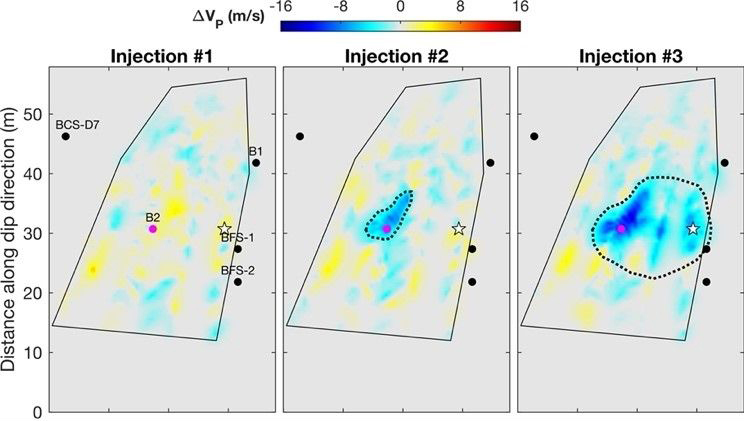Probing Subsurface Fracture & Fault Dynamics Using Continuous Active Source Seismic Monitoring (CASSM)
Presenter
Jonathan Ajo-Franklin
Dept. of Earth, Environmental and Planetary Sciences
Rice University
Description
Fractures and faults, both induced and natural, exert a dominant control on the permeability and long-term performance of engineered subsurface systems in tight rocks. In some cases they are a key enabling feature, allowing transport of heat or hydrocarbons, while in others they are a threat to containment, as is the case in geologic carbon storage. Despite their importance, the spatial distribution of fluid-conductive fractures and particularly their evolution over time after creation or reactivation are poorly constrained by existing methodologies. We present a pair of examples demonstrating the utilization of semi-permanent automated active-source seismic networks to temporally characterize induced hydraulic fractures and fault reactivation. The first example shows the potential of such measurement systems, which we refer to as Continuous Active Source Seismic Monitoring (CASSM), to characterize the extent and stress-dependent behavior of an induced hydraulic fracture at a deep hard-rock geothermal analog. The second example demonstrates the use of CASSM to spatiotemporally image aseismic fault reactivation at the Mont Terri Underground Laboratory, within a GCS seal analog. In this case, we were able to quantify both pore-pressure induced fault damage zone changes as well as longer term fault healing. An additional advance was developing an effective media model for inverting velocity changes for modifications in fault hydraulic properties, a key constraint when attempting to understand potential CO2 leakage. In both cases, the use of automated active source seismic networks allowed collection of tomographic data with survey epoch durations on the order of minutes, thus generating “movies” of elastic property change. In the future, we hope similar datasets, potentially utilizing spatially extensive fiber optics as sensing elements, will provide a powerful tool for understanding faults and fractures evolution over larger subsurface domains.

